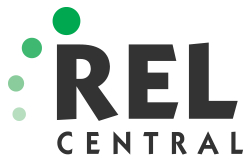How will students use their time if they are allowed to choose between academic or non-academic pursuits? That was the overarching question educators at Legacy High School (LHS) and Bismarck Public Schools (BPS) school district in North Dakota asked after providing students with time periods, also known as “flex time,” that they could use to pursue academic or non-academic pursuits. Working with the Regional Educational Laboratory (REL) Central to conduct a study that investigated this question, educators discovered the answer was nuanced.
Designed and built to accommodate the personalized approach, which may support improved student achievement by allowing students to learn through differing styles and to spend more time on mastering their studies than standard approaches to learning (Pane, Steiner, Baird, & Hamilton, 2015), Legacy High School provides students and teachers the space to foster student choice in learning. To complement the personalized learning strategy, school leadership instituted a system of flexible learning, a concept that helps students build decision-making and life skills by providing them choice in the use of their time.

Legacy’s flex time model breaks the day up into twenty-two, 20-minute subject blocks. A typical class will last two to three of these blocks, and it will include an additional block for teachers to work with students who are failing their class or who need support. Students not required to attend these study sessions have the opportunity to decide on how to use this extra block of flex time. With an average of 80 minutes of flex time a day, students can use this time to talk with friends, leave campus, study on their own, or study in learning centers housed within the school. With the system in place and implemented, the next step for school leadership was to better understand student behaviors in order to fine-tune systems that could help them improve academically
Through the North Dakota Innovative Schools Partnership, leaders at LHS and BPS partnered with REL Central staff to examine how students use their flex time and whether student use of flex time differs according to student demographic characteristics or academic achievement level. To do this, REL Central researchers provided students with time logs and asked them to keep track of how they used their flex time over the school year. REL staff then analyzed the data and provided both global and more refined results as part of the report How Legacy High School Students Use Their Flexible Time.
The results of the study showed that over the course of the year, students generally used 19 percent of their flex time for academic pursuits and the amount of time students chose to spend on academics did not vary by academic achievement. Further it found that “struggling students did not use more flex-time for coursework in or out of the learning centers than other students did.” In addition, the report indicated that while 74 percent of students who excelled in reading, math, or both academic areas spent more time engaged in nonacademic pursuits on the campus, only 40 percent of students not excelling stayed on campus when pursuing those same activities.
Reacting to these results, among others discussed in the report, leaders at LHS and BPS found that though the flex time schedule was to provide students with free time and rest periods, student usage of the time was not exactly aligned with leadership’s intentions. Instead, it is their intention that students who struggle academically would use more of that time for coursework and to take advantage of the services offered by the LHS Learning Centers, which were shown to be underused in the study.
To help school and district leaders achieve the goals of the school program, among the actions they plan to take is the inclusion of additional supports to help students choose how to use their flex time more effectively. This could include allowing students to set and evaluate some of their own academic goals in the classroom. Leaders are also looking to spur use of the academic centers by providing students more information about the variety of services the centers provide to remove the perception that they are only for struggling students.
LHS Principal Thomas Schmidt noted the value of the results in helping school and district leaders refine their instructional strategy.
“In working with REL Central to analyze our students’ use of their flex time, we’ve found the data we need to make critical adjustments and provide additional supports to ensure our students can access the great potential for learning that Legacy High School offers,” Schmidt said.
To dig deeper into the demographic data, read the full report here.
Marzano Research’s Jeanette Joyce contributed to this post.





